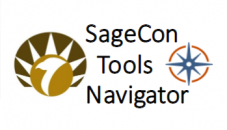Preliminary information on status, trends, and efforts to address threats to the sagebrush ecosystem and sage-grouse populations in Oregon.
 INSTITUTE FOR NATURAL RESOURCES
INSTITUTE FOR NATURAL RESOURCESYou are here
Sage-Grouse
Sage-Grouse

Eastern Oregon is home to over 15 million acres of sage-grouse habitat. The SageCon Partnership advances policies and actions that reduce threats to sage-grouse, sagebrush ecosystems and Oregon's rural communities.
Use the SageCon Tools Navigator to find SageCon web tools and technical resources for planning in Oregon’s sagebrush country.
EXPLORE RELATED:
The SageCon Partnership provides coordination across a broad-base of stakeholders in Oregon with an interest in sagebrush conservation.
Articles & Stories


About This Topic
The Sage-Grouse Conservation Partnership (SageCon) is a collaborative effort started in 2010 to leverage funding across Oregon’s sagebrush landscapes and build interagency agreements that balance natural resource protection with local livelihoods. The partnership is structured to develop policy agreements and focus investments across public and private lands to build up community capacity to address major threats from fire to invasive plants. Leading up to the 2015 greater sage-grouse Endangered Species Act listing determination, SageCon was working across Eastern Oregon to build collaborative solutions to improve sage-grouse population trends and the sagebrush habitat on which it depends. From 2014 to 2019, it was calculated that an average of $15 million dollars a year had been leveraged in federal investments to over $1 million a year from state and local partners to implement Oregon’s Sage-Grouse Action Plan.
















